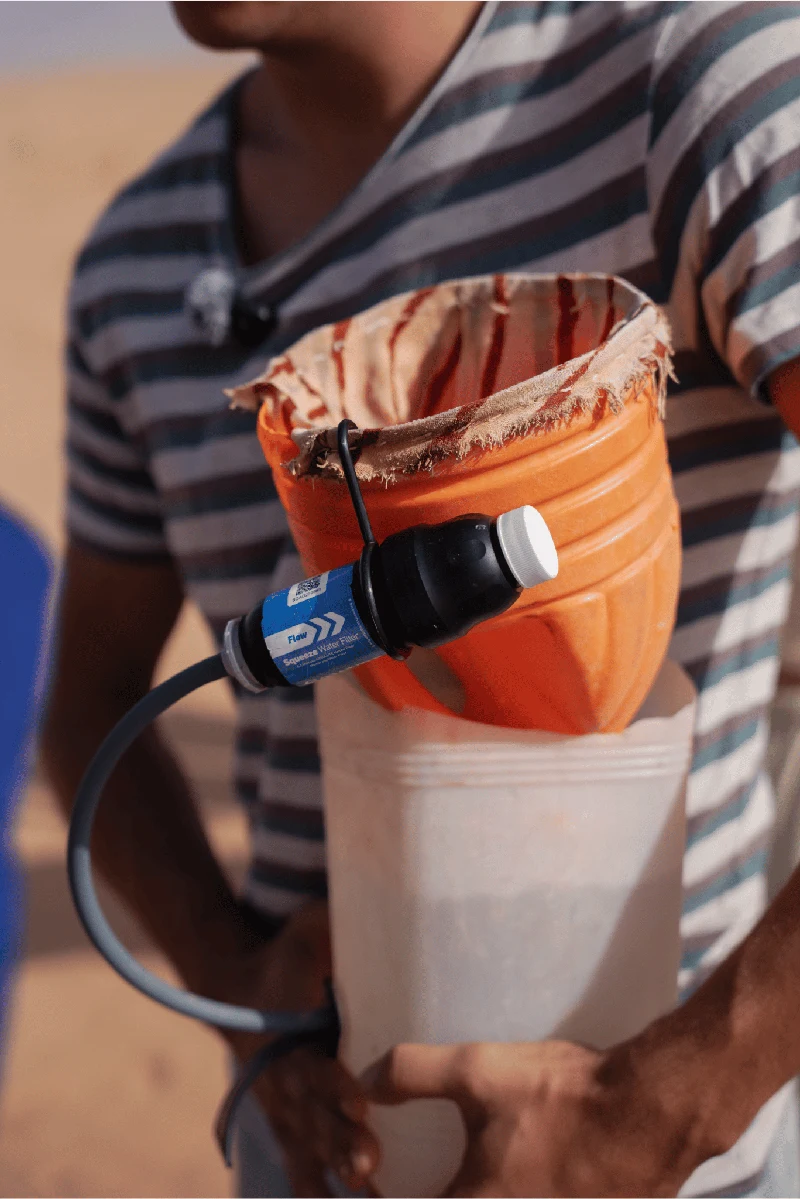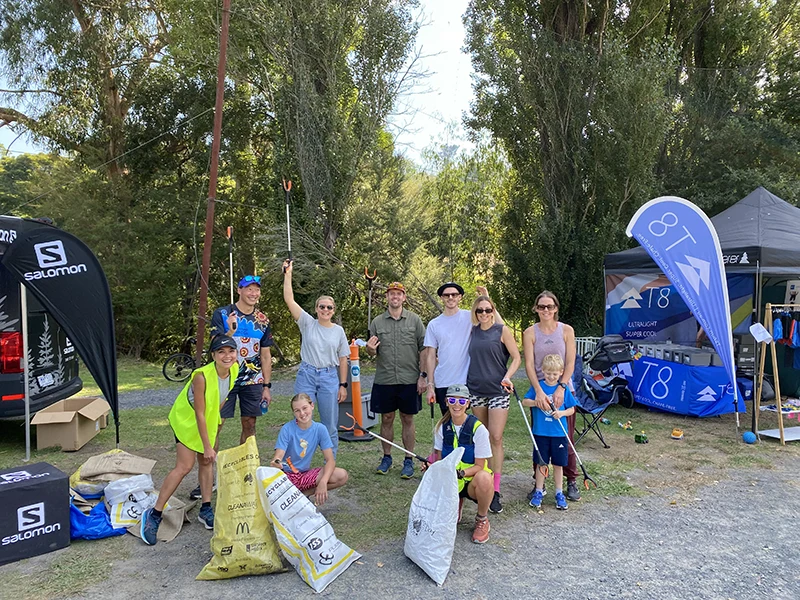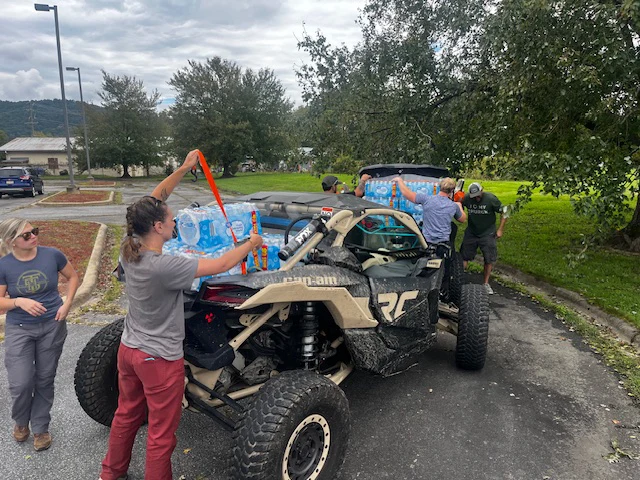

I never thought I’d be able to pursue a thru hike, let alone solo. But when I decided to attempt California’s Backbone Trail, it was clear that this was something I had to do alone. From chronic pain to conquering a long trail, this is the story of how I became a thru hiker while managing a long term injury.

When I fell in love with hiking in my late teens and early twenties, it was always a solo venture. I didn’t have outdoorsy friends who wanted to visit National Parks with me, and I’m not the type to sit around and wait for someone to join me in order to have a good time. I took myself on a solo trip to the Grand Canyon when I was 21 to do some day hikes, and later that year, drove to all of the connected 48 states alone to pursue trails in each National Park I’d pass by.
Solo hiking has always been empowering to me, and it’s where my roots are, but in 2020, everything changed with a series of injuries that were more than just a setback.
In June 2020, I acquired a long term impact injury to both knees on the descent from Cooper Spur in Northern Oregon. It started off as just my left knee, and then ended up on my right as well due to me favoring my left knee so dramatically. I spent my summer taking two weeks at a time off before attempting a mountain again, only to find that I was still injured, and starting the cycle over again. Hiking had been a major part of my life for years at this point, so the frustration of not being able to descend even the easiest hills went deeper than the injury itself.

It wasn’t until late September of that year that I realized that the injury I had resembled an impact injury called Jumper’s Knee. Jumper’s Knee takes 4-6 weeks to heal completely and the most time I’d spent off trail all summer was 2 weeks. I decided to give myself the full 6 weeks, which led to one of the toughest mental health challenges of my life. People don’t often talk about how physical injury can affect mental health, especially in people who not only love their sport deeply, but who have connected with themselves deeper because of their sport. Taking over a month off trail, for me, was disconnecting from who I was.
When my 6 weeks was up, I decided to attempt a short, 8 mile, flat trail in a nearby state park. It had rained recently, and not even a quarter mile into the hike, I slipped on a wet boardwalk, injuring my upper back. While the knee injury was prolonged and frustrating, this new pain was some of the worst I’d ever felt. It took me a month to be able to move properly again, and even now, over 2 years later, I still suffer from upper back pain constantly in my daily life.
I’d always had a secret dream to pursue a thru hike, but through all of my various injuries, also dealt silently with the grief that my thru hike dream might never come to fruition.

In 2022, I sat in my seasonal guide camp and made the promise to myself that I’d attempt the Oregon Coast Trail the following year. The OCT was attractive to me because the season to hike it is late summer into early fall, I could bring my dog, and the trail never ascends above 2,000 feet for the entire 400 miles.
Now that my pain had been reduced to a dull ache in my upper back over time, I spent all summer training. I did everything I could to not only be hiking as many miles as possible per week, but also worked on carrying weight in my pack again (which I did daily for work), and rock climbed regularly, the only thing that’s ever truly helped my back pain.
What I didn’t expect though, was to end up in the city I was raised in – Los Angeles– six months later, and spontaneously decide to do a thru hike there first.
The Backbone Trail is a 70 mile long trail in California’s Santa Monica Mountains and I had noticed an increasing amount of trash, disrespect, and destruction to this landscape that is hidden in plain sight in the middle of a major city. I wanted to do something to help bring awareness to it, and so, I decided to do the one thing I knew I could do well: hike.

It wasn’t just about the mountains and my leave no trace mission, even though that was all I talked about on social media. It was about coming back to myself and my roots in the mountains that raised me.
As scary as it was to admit, this trek had to be solo. While having a hiking partner would’ve made this journey easier, it would have simply been a different journey. I’d spent a lot of my time healing the physical injuries among environments and people that were less than supportive. I knew that for me to walk back to myself in this way, I’d need to be alone on the trail.
Hiking solo was going to be the only way I could truly prove to myself once again, that long trails and big mountains were accessible to me, despite carrying my chronic back pain under the straps of my 65 liter pack. My recurring knee pain always reminds me to slow down on the descents, but when it didn’t rear its ugly head for the whole 70 miles, I felt like a miracle had happened.

There were so many ways that I managed my pain on trail.
The first thing I did was pay close attention to my choice of gear. I’d noticed on day hikes that hiking boots tended to hurt my knees, so I chose to hike in my trail runners. I also prioritized the use of trekking poles in my gear list. I knew that the BBT would have a lot of climbing and a lot of descents, and the last thing I wanted was knee pain. I also made sure I had a pack that truly fit me so that I could balance the weight of the rest of my gear properly and avoid adding to my already constant back pain.
It was also important that I approached the trail with a commitment to be honest about what was going on with my body. Of course, I had a commitment to finish the trail, but I knew in the back of my mind that the chances of getting injured again were higher for me, and so I promised myself that if I had to get off trail for any reason, that was okay and it was not a failure–I could always come back next year and try again.
It’s important to note that there is no shame in listening to what your body needs.
On that note, I made sure that I was going very slow on the downhills, which it turned out, was necessary anyway due to the erosion after the rain this winter. The consciousness of what was happening with my body, though, did prompt me to take a zero day on day three. The terrain of the downhill section on day two was really hard on my body and I knew that if I took day three off, I’d have a much higher chance of finishing.

Thru hiking is already extremely difficult, but it’s only made more difficult when you’re a person who deals with pain on a daily basis. However, about 50 miles into my 70 mile trek, I found myself realizing that not only could I do this and finish this hike, but I could pursue much larger trails in the future. And so, I committed to hiking the Oregon Coast Trail, with my dog Lassen as my hiking buddy, starting in September of 2023.
For 400 miles, I will carry the weight for both me and my dog, proving, with every step south, that I can pursue and complete difficult endeavors like our country’s long trails, and I will not stop trying, no matter what the trail throws at me.
From the Squad
Campfire conversations with our community, from Squad Members and Ambassadors to Brand Partners and the Sawyer team.

















